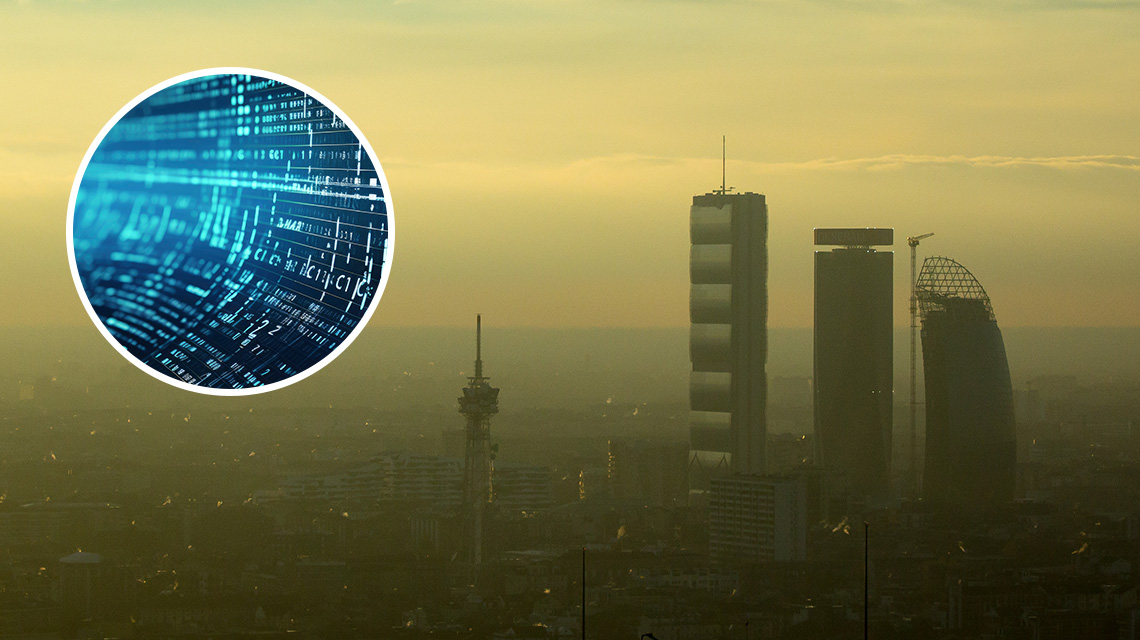Italian National Agency for New Technologies, Energy and Sustainable Economic Development

Environment: From ENEA an algorithm to track air pollution
The algorithm capable of tracking air pollution sources by sector and geographical area is called ORSA[1] and was developed by ENEA to identify their origin and keep their track even during their chemical-physical transformations in the atmosphere. Thanks to the support of the Ministry of the Environment and Energy Security and the company Arianet, ORSA is already operational in the ENEA air quality monitoring system MINNI, which provides daily forecasts of the main concentrations of gases and particulates in the lower layers of the atmosphere (three days ahead for Italy and four days ahead for Europe).
“This tool works as an actual traceability system that allows emissions to be ‘labeled’ to know the specific ‘contribution’ of each individual source to the concentrations of pollutants in the atmosphere,” explained Gino Briganti at the ENEA Laboratory of Atmospheric Pollution, first author of the study published in Atmosphere together with Ilaria D’Elia, Mihaela Mircea and Antonio Piersanti. “It is addressed in particular to local administrations,” said Briganti, “which have the task of preserving air quality and citizens’health through policies that directly impact the most polluting sources, including road traffic, domestic heating, livestock farming, fertilizers and industry.
Currently, there are so-called emission inventories, compiled by environmental agencies, which catalogue and calculate the mass quantity of each pollutant that has an impact on health and the environment (nitrogen oxides, sulphur oxides, dust, volatile organic compounds, ammonia, heavy metals) emitted by different sources. “However, this information is not sufficient to understand ‘what does what and how much’ in the air, because the movement of air masses and chemical and physical processes in the atmosphere modify the characteristics of the pollutants to which humans and the environment are exposed”, explained Antonio Piersanti, head of the ENEA Laboratory of Atmospheric Pollution.
For instance dust, transported by winds, deposits on surfaces and is then resuspended by the wind, depending on its size, which depends on the type of source; Ozone, a typical summer pollutant, is not emitted directly from natural or anthropogenic sources, but is generated in the air by chemical reactions involving nitrogen oxides and volatile organic compounds, i.e. substances emitted by various anthropogenic activities and vegetation.
“Our algorithm has proven to be an adequate tool to orient air quality policies, since it detects the “current” and not the “potential” composition of the atmosphere (as do other methods), highlighting the main sources on which to act; subsequently, a complete modeling study will be needed, with greater calculation costs, to directly estimate the effects of the emission reductions considered by specific air quality policies”, pointed out Piersanti.
A first experimental application on a national scale of ORSA has already confirmed that in winter months, in Italy, the highest concentrations of PM10 are attributable to residential heating. In the Po Valley, traffic and agriculture have a significant impact on air pollution. Furthermore, in some rural areas of Lombardy, summer ozone concentrations are mainly originated in other regions or derive from high layers of the atmosphere, confirming that this pollutant, particularly harmful to health and the environment, is originated by non-localized contributions, but is subject to transboundary transport comes from transport for hundreds of kilometers and from the chemical reactions among other pollutants.
